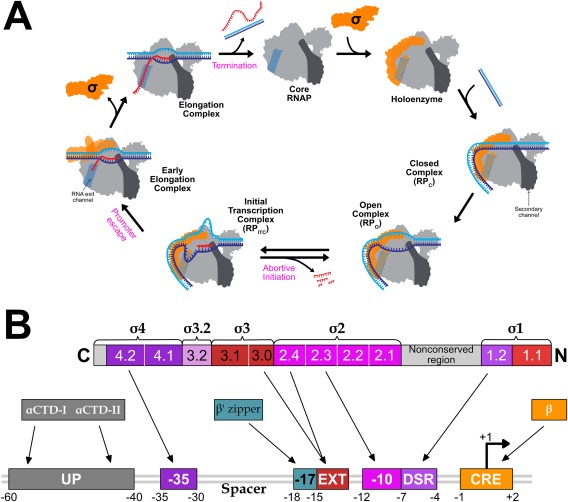Figure 2.

Schematic of transcription cycle and σ70 interactions with promoter DNA. (A) Association of σ (green) with core RNAP forms the RNAP holoenzyme (grey). The secondary channel (darker grey highlight) and the RNA exit channel (medium grey highlight) are represented on the right side and left side of the RNAP cartoon, respectively. σR3.2 and σR4 is shown protruding into the primary channel and occupying the RNA exit channel, respectively. HoloRNAP associates with promoter DNA (template strand in blue, and nontemplate strand in cyan) to form RPC, which isomerizes to RPO. Initial transcription by RPITC produces short abortive RNA products. Nascent RNA can displace σR4 from the RNA exit channel by clashing with σR3.2 and can enter the RNA exit channel to form the elongation complex. Eventually, RPE undergoes transcription termination resulting in RNAP dissociation from DNA. (B) Evolutionarily conserved structural domains and conserved regions of σ are shown as numbered and color‐coded boxes. Promoter DNA is shown underneath, with arrows indicating interactions between promoter DNA sequence elements and regions of σ or RNAP.
